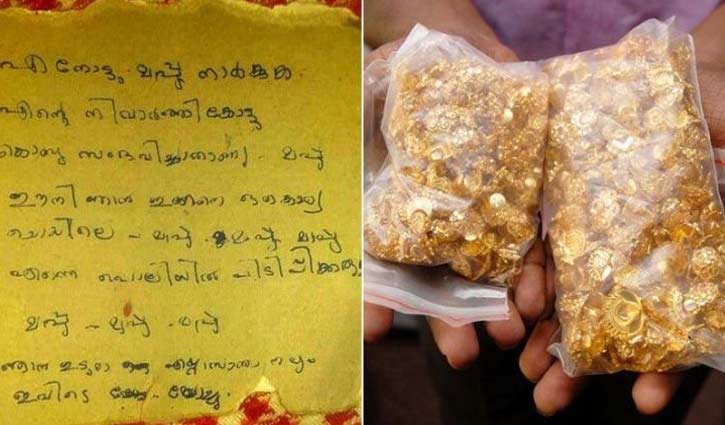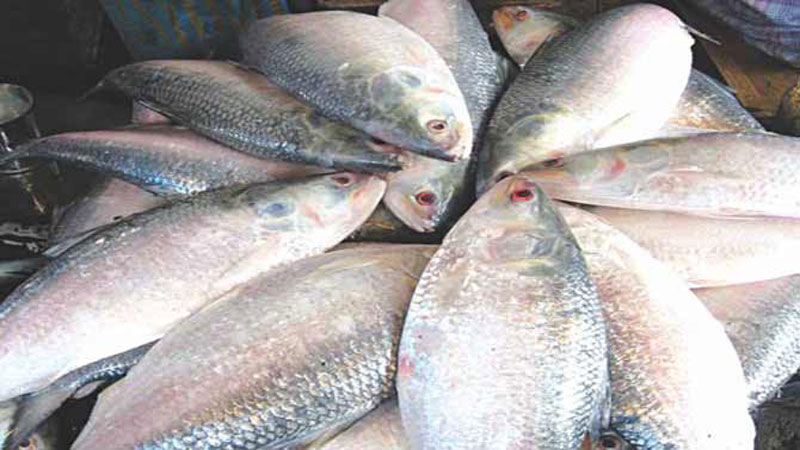Bangladesh is going to set records for the production of hilsa. Hilsa production is increasing every year in the country. Over half a decade of hilsha production exceeded the amount of five lakh tons milestone.
Statistics show that in the year 1986-87, the production of hilsa in the country was 95 thousand tonnes. In the 2002-03 fiscal year, the amount of production of hilsa was 91 thousand tons in the house. But in the year 2015-2016 fiscal year, the yield of the hilsa increased to 3 lakh 95 thousand tonnes due to massive initiatives. In the year 2016-17, the production of hilsa exceeded four lakh tonnes in the country. It is expected that Hilsa’s production will exceed five lakh tonnes in the financial year 2017-18 fiscal year. The Ministry of Fisheries and Livestock Resources told the information.
Meanwhile, World Fish observes that 60 percent of the world’s hilsa is produced in Bangladesh. In addition, the remaining 5 percent of Hilsa is found in India, 20 percent, Myanmar 15 percent, the Arabianland and Pacific and Atlantic Ocean countries.
According to the Department of Fisheries and Livestock, Malaysia, Thailand, Iran, Iraq, Kuwait, Myanmar, India, Pakistan, Bahrain, and Indonesia are in the next position in producing Hilsa. Hilsa fish are also caught on the coast of these countries. However, the production of hilsa recently declined in these countries. But in Bangladesh every year, the yield of hilsa is growing at 9-10 percent. Because the Hilsa chose to leave the egg to the border of Bangladesh. For this reason, the mothers of these countries got filled with ‘Hilsa’ in the rainy season. Hilsa is found in the sea at a distance of 1200-1300 km from the estuary and 250 kilometers from the coast. Hilsa could travel 71 kilometers a day. As much as the hilsa comes from the sea, the salt gets reduced from the body. It enhances taste by Hilsa.
On the contrary, the contribution of Hilsa to the total domestic production (GDP) in Bangladesh is 15.1 percent. Hilsa is 12 percent of the country’s total fish. Its value is around 7,500 billion taka. The foreign exchange for 150-300 crore comes through the export of Hilsa.
Asked about this, Fisheries and Livestock Minister Narayan Chandra Chand told the Bangla Tribune that nearly five lakh people of the coastal fishery community are directly involved in the procurement of hilsa. The main source of livelihood of more than 20-25 lakh people is that of Hilsa. They are directly or indirectly involved in transport, sale, mesh and boat making, ice production, processing, export etc.
He also said Bangladesh created a record for fish production. Bangladesh is now self-contained in the fields. Bangladesh is in the fourth position in fish production in the world. Many species of missing species are now being cultivated through research. The government-owned and privately-washed fish are being cultivated. More research will be done on fish farming. Apart from this, the government has taken a massive program to protect the mother hilsa and jatka. Various types of assistance for fishermen are also being provided to Hilsa.
The concerned people think that if the amount of jats caught in the year is protected and their average weight is increased to 500 grams, then it is possible to increase the production of more than two lakh tons of hilsa in the country. They also need government surveillance for this reason.
The concerned people also said that the maximum number of hilsa can be released in the breeding season and the small hilsa can grow, so that if the government takes necessary steps, the country’s small and big rivers will be filled with hilsa.
Mridula Chowdhury, Professor of Fisheries and Marine Science Department of Chittagong Agricultural University, said, “Hilsa in Bangladesh cannot be mixed with any country in the world. Hilsa exception of Bangladesh. If adequate action is taken, it is possible to further increase the production of hilsa in this country. For this, the government needs more stringent surveillance. Jatka must be stopped. Hilsa should be given an opportunity to leave the eggs at ease.
Research results of the Bangladesh Fisheries Research Institute say that, 10 years ago, hilsa could be found in the rivers of 21 upazilas of the country. Currently, this fish is available in the river flowing around 125 Upazilas. Haldas are available from Mahananda of Padma and Hakaluki Haor of Moulvibazar and Madi Haor of Brahmanbaria. However, the number of Hilsa fish is not growing due to the destruction of Jatka.
Fisheries sources said the hilsa smaller than 25 cm long is called Jatka. In 2012, 10 thousand 900 tonnes in the country, 11 thousand tonnes in 2013, 11 thousand 800 tonnes of jatka in 2014. Their size is between 14-20 centimeters. And weighing 30 grams at an average. It is estimated that about 38 crore Jatka hilsa is being collected every year in the country.
Researchers say that an Hilsa collects at least 3 lakh and maximum 21 million eggs. Renu Hilsa contains 70-80 percent of these eggs. The maximum of 10 percent of the last survives, which is later converted into a hilsa.
Fisheries and Livestock Minister Narayan Chandra Chand told the Bangla Tribune that while considering the fishermen during the prohibition of getting the Jatka, the government has come forward to create alternative employment opportunities as well as making them run under the VGF program. So far, 42 thousand 615 fishermen families have been provided various inputs according to their needs. In the fiscal year 2015-2016, 37,788 tonnes of VGF food assistance was provided to the families of two lakh 36 thousand and 176 prisoners at 40 kg.










